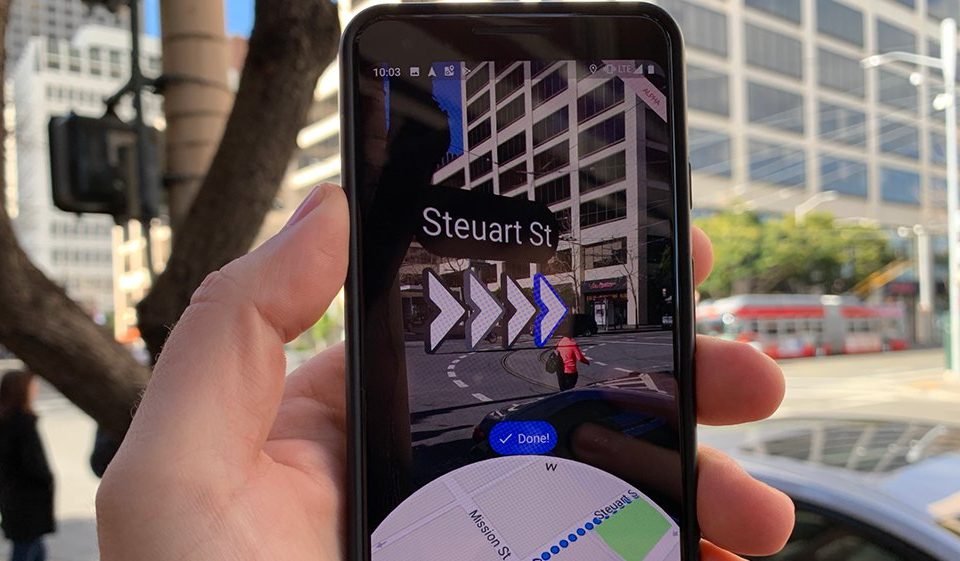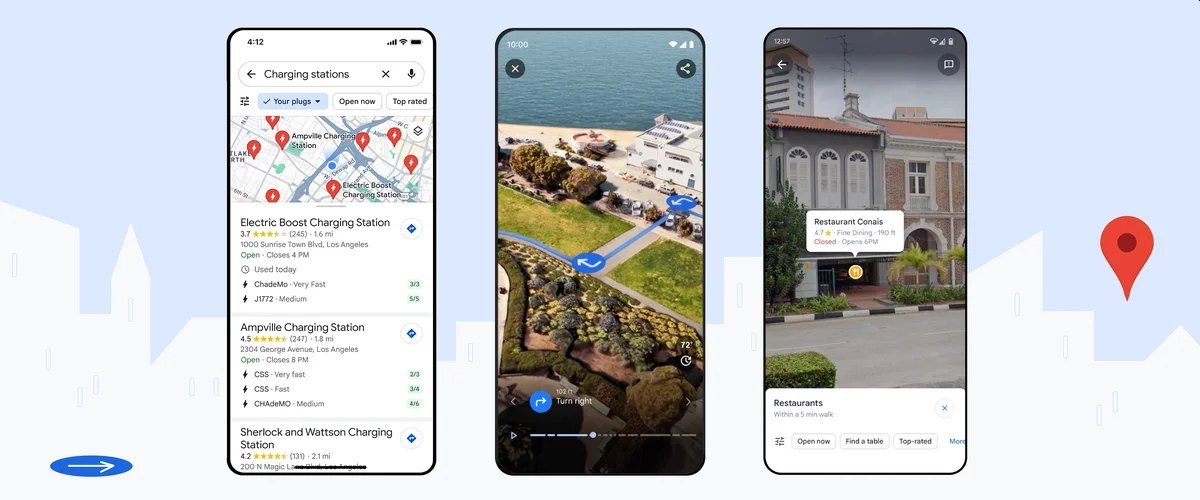Google Maps gets a major AI boost in new update, here’s what’s new

Google has just unveiled a series of exciting updates for its widely-used Google Maps, supercharging it with the prowess of AI. In this latest announcement, Google has not only expanded on existing features but also introduced some new and intriguing additions. Importantly, the updated Google Maps is now accessible to both Android and iOS users.
Leveraging the capabilities of AI, the company has made significant enhancements to several facets of Google Maps. This includes improvements to the EV charging station feature, which is a boon for electric vehicle users. Additionally, users can now expect more precise recommendations for nearby activities and a deeper level of visualization. One notable aspect of these upgrades is the integration of radiance fields, an AI subset that facilitates the creation of a 3D scene using 2D images.
The new Google Maps update incorporates a range of fresh features, including:
- Immersive View for Routes: This innovation employs AI to merge Street View, aerial imagery, and real-time data to provide users with a photorealistic preview of their intended Google Maps route. This feature proves valuable for assessing traffic conditions, identifying landmarks, and gaining a clearer understanding of what to anticipate on the journey.
- Lens in Maps: Integrating AI and augmented reality, this feature assists users in recognizing and discovering more about objects and locations in the physical world. Users can employ Lens in Maps to retrieve information about nearby ATMs, transit stations, restaurants, coffee shops, and stores.
- Eco-friendly Routing: Making use of AI, this feature aids users in identifying the most fuel-efficient path to their destination. This not only saves money on fuel but also contributes to a reduced carbon footprint.
- Live View: This function harnesses AI and augmented reality to assist pedestrians in orienting themselves. Live View can display directions, information about nearby businesses, and other relevant details superimposed on the real world.

Source: Google Maps
These updates reflect Google’s commitment to enhancing the user experience by merging cutting-edge AI technologies with the practicality and convenience that Google Maps is renowned for.
Google has just rolled out new updates to its popular Google Maps which is supercharged with AI. The new update includes the expansion of preexisting features and the addition of some new ones, according to a Thursday announcement. The new Google Maps update is currently available to users of Android and iOS devices.
The company said AI allowed for improvements to Google Maps’ EV charging station feature, more specific recommendations of nearby activities, and more in-depth visualization. Many of the new features use radiance fields, an AI subset that allows for using 2D images to construct a 3D scene.
The update includes a number of new features, including:
- Immersive View and Augmented Reality for Routes: This feature uses AI to combine Street View, aerial imagery, and live information to give you a photo-realistic preview of your planned Google Maps route. This can be helpful for visualizing traffic conditions, identifying landmarks, and getting a better sense of what to expect on your journey.
- Lens in Maps: This feature uses AI and augmented reality to help you identify and learn more about objects and places in the real world. You can use Lens in Maps to find information about nearby ATMs, transit stations, restaurants, coffee shops, and stores.
- Eco-friendly Routing: This feature uses AI to help you find the most fuel-efficient route to your destination. This can help you save money on gas and reduce your carbon footprint.
- Live View: This feature uses AI and augmented reality to help you orient yourself when walking. Live View can show you directions, nearby businesses, and other information overlaid on the real world.
Discovering New Activities with Google Maps
Google Maps is introducing innovative ways for users to find exciting activities in their vicinity. Recognizing that many users search for generic terms like “things to do” in their area, Google Maps is now providing more specialized and relevant information.
Instead of presenting a random list of nearby activities, Google Maps will offer a categorized list, neatly organized by topic. For example, if you’re searching for things to do in Tokyo, you’ll receive suggestions like “anime,” “cherry blossoms,” and “art exhibitions.” You can then delve deeper into your areas of interest.
Enhancing the EV Experience
 This week, Google Maps is enhancing its Electric Vehicle (EV) charging station feature, providing valuable insights for drivers. Now, you can see when a charging station was last used, reducing the likelihood of arriving at an inoperative station. Additionally, this feature lets you check the charging speed and whether it’s compatible with your vehicle, although these are not entirely new tools.
This week, Google Maps is enhancing its Electric Vehicle (EV) charging station feature, providing valuable insights for drivers. Now, you can see when a charging station was last used, reducing the likelihood of arriving at an inoperative station. Additionally, this feature lets you check the charging speed and whether it’s compatible with your vehicle, although these are not entirely new tools.
Over the years, electric vehicle drivers often experience charging anxiety, not knowing where they can charge their EVs during trips, whether it’s a road trip, daily commute, or a local errand.
In a blog about the update announcement, Google also explained the problems faced by electric vehicle drivers about how they often experience charging anxiety, not knowing where they can charge their EVs during trips, whether it’s a road trip, daily commute, or a local errand.
Starting this week, Google added that Android and iOS users with Google built-in cars will be able to use the comprehensive charging station information that comes with the Google Maps. This information will include details about charger compatibility with their vehicle, charging speed options (fast, medium, or slow), and aiding drivers in selecting the most suitable charging station.
Furthermore, given that around 25% of charging stations in the United States are non-operational at any given time, the update allows users to check when a charger was last used, saving them from potentially wasted trips to malfunctioning stations. These enhancements will be available globally on iOS and Android platforms this week, wherever EV charging station information is accessible.
Google Maps Platform’s Places API will also make this EV charging information accessible to developers. This means that companies can integrate real-time EV charging station data into their websites and applications, providing users with up-to-date information on charging options.
“Starting this week, building on our capabilities in cars with Google built-in, EV drivers on Android and iOS will now see even more helpful charging station information, including whether a charger is compatible with their vehicle and whether the available chargers are fast, medium, or slow to help you find the charging station that best meets your needs. And since roughly 25% of all chargers in the U.S. are down at any given time, you can also see when a charger was last used to help you avoid wasting time heading to a broken charger. These updates start rolling out globally on iOS and Android this week wherever EV charging station information is available,” Google said in a blog post.
A Deeper Visual Experience
Google Maps is also expanding its Lens in Maps feature to 50 more cities this week. Previously known as “Search with Live View,” this function harnesses your phone’s camera to scan nearby buildings, offering information such as store names and reviews by analyzing billions of photos.
Google Maps is further enhancing its visualization for navigation. Immersive View, introduced in May, is expanding to more cities, including Los Angeles, New York, and San Francisco, allowing users to virtually tour their planned routes.
In the coming months, Google plans to provide improved visual information about buildings and lanes for drivers in 12 countries. In the United States, users will soon be able to check if their route includes highways with carpool lanes, making navigation more informative and user-friendly.




